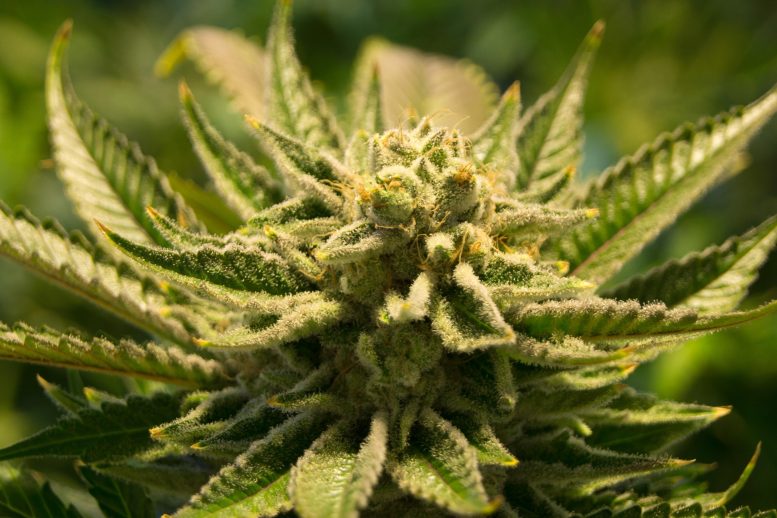
Recent research indicates that street cannabis worldwide has become significantly more potent over the last 50 years, posing an elevated risk of harm.
The largest study on how cannabis has changed over time finds increased strength putting consumers at greater risk of harm.
New research shows that over the past 50 years street cannabis across the world has become substantially stronger carrying an increased risk of harm.
The team behind the study from the Addiction and Mental Health Group at the University of Bath, synthesized data from over 80,000 cannabis samples tested in the past 50 years from street samples collected in the USA, UK, Netherlands, France, Denmark, Italy, and New Zealand. Their findings are published in the journal Addiction and the research was funded by the Society for the Study of Addiction.
The researchers investigated how concentrations of THC (the intoxicating component of cannabis responsible for giving users a ‘high’) had changed over time in different types of cannabis. In herbal cannabis, they found that THC concentrations increased by 14% from 1970 to 2017. This was primarily due to a rising market share of stronger varieties such as sinsemilla relative to traditional herbal cannabis which contains seeds and less THC.
The team have previously found consistent evidence that frequent use of cannabis with higher levels of THC carries an increased risk of problems such as addiction and psychotic disorders.
Lead author Dr. Tom Freeman, Director of the Addiction and Mental Health Group at the University of Bath said: “As the strength of cannabis has increased, so too has the number of people entering treatment for cannabis use problems. More Europeans are now entering drug treatment because of cannabis than heroin or cocaine.”
The researchers found that the increases in THC were particularly high for cannabis resin, with THC concentrations rising by 24% between 1975 and 2017. Cannabis resin is extracted from herbal cannabis and is now typically stronger than herbal cannabis according to the findings.
They also looked at concentrations of cannabidiol or CBD, which is not intoxicating but may have potential medical uses such as helping people to quit cannabis. In contrast to THC, they found no evidence for changes in CBD in cannabis over time.
Study co-author Sam Craft also from the Addiction and Mental Health Group at the University of Bath explained: “Cannabis resin — or ‘hash’ — is often seen as a safer type of cannabis, but our findings show that it is now stronger than herbal cannabis. Traditionally, cannabis resin contained much lower amounts of THC with equal quantities of CBD, however, CBD concentrations have remained stable as THC has risen substantially, meaning it is now much more harmful than it was many years ago.”
Cannabis is the most widely used illicit drug in the world but has recently been legalized in Canada, Uruguay, and several states in the USA. The findings of this new study have particular relevance in light of growing demands to legalize cannabis in an attempt to make it safer. Most recently a referendum in New Zealand (which ultimately failed to receive public support) included measures to limit the strength of cannabis sold through legalization.
The researchers argue that increases in cannabis strength highlight the need to implement wider strategies for harm reduction similar to those used for alcohol — such as standard units and public guidelines on safer consumption limits.
Dr. Tom Freeman added: “As the strength of cannabis has risen, consumers are faced with limited information to help them monitor their intake and guide decisions about relative benefits and risks. The introduction of a standard unit system for cannabis — similar to standard alcohol units — could help people to limit their consumption and use it more safely.”
Reference: “Changes in delta‐9‐tetrahydrocannabinol (THC) and cannabidiol (CBD) concentrations in cannabis over time: systematic review and meta‐analysis” by Tom P. Freeman, Sam Craft, Jack Wilson, Stephan Stylianou, Mahmoud ElSohly, Marta Di Forti and Michael T. Lynskey, 7 November 2020, Addiction.
DOI: 10.1111/add.15253









This is the same BS I’ve heard since the 1970s (like when the US gov. said it caused brain damage and will kill you but refused to release the scientific data – a FOIA subpoena showed they suffocated chimps with pure thick oxygen-deprived smoke for 15 minutes at a time – like smoking 500 packs of cigs at once – until they died, then autopsied their brains). Back then we smoked two big fat joints back-to-back. Now we smoke two little pinches through a bong. THC is not dangerous! Carbon monoxide is; tars/resins are. Since we smoke so much less, it is SAFER than low-THC buds. This is NOT alcohol. You smoke until you feel just right; there is very little delay in the effects taking place. And alcohol will “tell” you: “you’re fine, and having a good time! Drink more! and more! And you’re fine to drive!” which is of course a delusional lie. Buds don’t do that. And being able to smoke though a water-filtration device removes most of the tar. I don’t eat buds, because I need literally 10-100 times as much to get an effect (it only worked one time for me), and that is wasteful.
Living in the city, I cough up black stuff ANY TIME I drive though downtown, from the exhaust pollution and auto-tire rubber-dust; same if I drive long distance on the interstate highways. As an expectorant and decongestant, buds help facilitate that. The industrial pollutants also exasperate my asthma, making it harder to breathe and/or cough out the black stuff. Buds eliminate the asthma symptoms, again helping me.
Out in the country away from industrial pollution, I can smoke 2-3 times as much buds, yet NEVER cough up black stuff (it is all clear) for MONTHS at a time; yet go in the city one day, and THAT NIGHT (and maybe the next day, too) I’m coughing up black stuff.
I WANT to smoke (not eat) buds for this reason. Plus I like being “high” (not drunk on poisonous ethal alcohol, not tweeked out on amphetamines, nor chilled/wasted on opiates, etc; i.e. I don’t seek drugs just for being drugs). Having more potent (higher THC levels) buds is the best thing for me.
Oh, and while good “hash” (gold “keef” hash made from the THC cyrstals collected from the buds of unharvested or just-harvested palnts – not black “bubble” hash made from the resin of the waste products – leaves and stems) leaves me with a nice high, it is too “heavy” on my lungs and I don’t care to smoke it more than one or two “hits” a year. I have NEVER considered it safer; nor has anyone I’ve ever known.
Once again, we see these “researchers” with a pre-defined motive: “THC is dangerous!” “Getting ‘high’ is BAD!” Not scientists. This guy “Sam Craft” is a nutbag.
And 14% is not that much more!
We smoked two joints back-to-back, back in the 1970s-1990s. If we smoked a third joint, it didn’t “wack us out”, but that is a 50% increase.
A beer is maybe what, 4% alcohol? Add a 14% increase, and you get 4.56%. Reality is that beers range from maybe 1.5% – 7% alcohol.
Buds on the shelf in Oregon for recreational sale – FROM WHAT I REMEMBER SEEING – “TYPICALLY” range from about 10%-18%. That variation is greater than the 14% increase the “researchers” claim to have found.
These excuses for researchers are like Trump supporters who say he won, and the vote was “stolen” – self-important delusional fools with an agenda.
Sorry to see this plainly junk science appearing on this website. This study is absolute nonsense! The myth of dangerously increasing cannabis potency has been debunked 100 different ways – it’s no surprise this study is coming out of the UK which is one of the last countries on Earth to be stricken by irrational Reefer Madness.
As previous posters stated- BS. Weed in the’70s was potent if you could get it. Thanks Tricky Dick for stopping the duffel bags from SE Asia. And the “say no to drugs” Rayguns for spraying Mex weed with Paraquat.
Rumors about weed. Made you gay. Caused breast enlargement. Smoking a joint is worse than smoking a pack of cigarettes. All BS. And I’ve been wondering if smoking weed cleared my congestion. Well if another “old guy” says it does his, then it may be so. Allergies congest my breathing every day. And the smoke in the air from fires in the West probably don’t help. Funny thing is I hadn’t smoked for 2/3 years. And my lung capacity seemed to decrease from not smoking weed. Which was possibly 14% less.